
Review on MikroTik RB941-2nD RouterBoard hAP Lite: Affordable 2.4GHz Home Access Point by Bishop Roshad

Works well for the price
I bought this device for two main reasons: the price and the many features this router has. When I bought this device I could get it for $20, so my rating is based on that price. I would like to say that this is my first MikroTik router and I'm not necessarily very knowledgeable when it comes to the wide range of features this router has. The device contains a 2x2 300Mbps wireless chip with 22dBm output power, 4 100Mbps Ethernet ports, a 5V USB power supply and a 650MHz processor. Below I will talk more about things like RAM. Finally, it also runs MikroTik RouterOS. This package contains the router itself, a two-pin USB connector (which is on the side, in case that matters to someone), and a small piece of paper with a brief description of the router's specifications. When the box first arrived, I was incredibly surprised at how small this router was. It is slightly larger than my LG Volt smartphone. Due to its small size and light weight, I was afraid it would tip over or be dragged, but the handles on the bottom seem to hold it in place well enough. On the back of this device is a USB power connector, a reset button. Button, activity light, power light and then 4 100Mbps Ethernet ports. By default, port 1 is configured as a WAN port. Please note that there are no displays on the front of the device. In some cases, you can sometimes see the indicators on the back of the device without looking as they can shine through holes in the case above. When I first turned on the device and tried it out, I noticed that my 4th Ethernet port wasn't working. My cable didn't snap and the connectors didn't seem to fit the case perfectly (there was a gap on the left side of the switch and the 4th connector didn't have a smooth side). I tried setting it up and turning it off and on in the settings and it ended up working. If load time is important to you, I found the total load time to be around 40-50 seconds. As for the features, I won't go into detail as I'm not too familiar with them. However, I will say that this device has many features. I've heard that because this device uses a different firmware version than its bigger brethren, some features are lost, but compared to everything else in this price range, the feature list is huge. So far I've mainly used the WebFig (web interface) user interface. I've noticed that sometimes navigating the UI gets a bit slow. The speed dial page usually takes a long time to load. I bought this device mainly because of the many WLAN features, especially the multi-SSID function. I can run many SSIDs from this little guy and it's rock solid. Initially I had problems with multiple SSIDs, but when I changed the mode from "bgn" to "n only" everything became much smoother. I know there are many memory and disk space issues on this device. Here are my current stats as listed on the resources page: * Free Disk Space = 8.2 MB Total Disk Space = 32 MB * Free Disk Space = 8.3 MB Total Disk Space = 16 MB Because of this, as I mentioned above, will this router run the "smips" version. My firmware was out of date when I received my device and I was able to update it to version 6.29.1 which was current at the time of writing this review. For those who are unfamiliar with the firmware update process I do for these devices, you must first download the firmware from the MikroTik website, then in your WebFig go to "Files" and upload it, once this is done you must restart the device Now go to "System" -> Routerboard and click "Update" Make sure "Update Firmware" is the latest firmware you want to update to She now new again. I had some small improvements in overall performance by updating niya stock firmware. In terms of wireless performance, the range is okay. It's not the best you could expect, but it's certainly not the worst. For its size, the range is pretty amazing. However, it won't blow your mind. Make sure you enable 20Mhz under the 40Mhz radio channels as this will result in reduced range and also choose channel 1, 6 or 11. The signal itself is generally pretty stable and doesn't fluctuate everywhere like with some other devices. A useful feature of this device that many in this price range don't have is the ability to conduct surveys on the website and scan frequency usage. This requires an Ethernet connection. What I really liked about this device is that it applies settings very quickly. Probably because of the great firmware it comes with by default. When I was messing around with the WiFi settings, this thing changed instantly before I even got back to my inSSIDer scan. I couldn't even tell if things were being applied intermittently, the radio signal just stayed constant and I didn't have to switch off for a few seconds to apply a new setting. For those who are curious, I hooked this up to my 5V/1A portable battery and it worked fine. I wasn't sure if I should give it 5 or 4 stars. I ended up with 4 mainly because I'm not entirely sure MikroTik knows who they're trying to sell it to. The design and price of this router seems to advertise to the average user. On the other hand, I see where many regular users can get lost in the UI. In addition to this feature-rich typical MikroTik, there could be a simple UI overlay. Something like a button that takes you from the basic UI to the one you have now.
- Impressive
- Infinitely slow
New products
Comments (0)
Top products in 📶 Wireless Access Points

Ubiquiti NanoStation locoM2 2.4GHz airMax 8dBi CPE - Indoor/Outdoor High Performance Wireless Device

30 Review
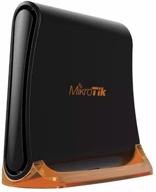
📶 High-Performance MikroTik hAP Mini RB931-2nD: Small 2GHz Wireless Access Point, 3x 10/100 Ethernet Ports, 650MHz CPU & RouterOS

24 Review
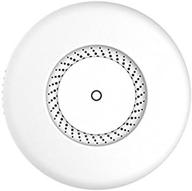
MikroTik RBcAPGi-5acD2nD-US: High-performance Dual-Band 802.11ac Access Point

35 Review
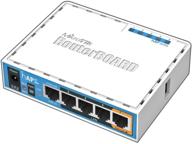
MikroTik Dual-Concurrent Access Point: hAP ac Lite RB952Ui-5ac2nD-US

79 Review
Another interesting products
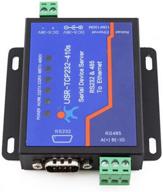
🔌 USR-TCP232-410s: RS232/RS485 Serial to Ethernet Adapter/IP Device Server with DHCP/DNS Support

4 Review
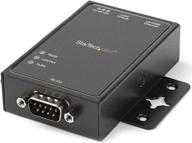
🌐 StarTech.com NETRS2321P: 1-Port RS232 to Ethernet IP Converter, Serial over IP Device Server - Black

5 Review
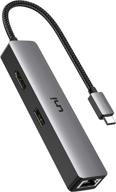
🔌 uni USB C Hub with Ethernet Adapter, 4K HDMI, Gigabit Ethernet, and 3 USB 3.0 Ports for MacBook Pro, iPad Pro, XPS

11 Review
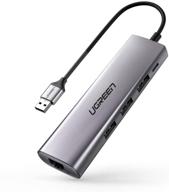
UGREEN USB 3.0 Ethernet Adapter Hub with RJ45: Fast Gigabit Ethernet Converter, 3 Ports USB 3.0 Hub Compatible for MacBook, iMac, Surface Pro, Chromebook, Laptop, PC

11 Review

